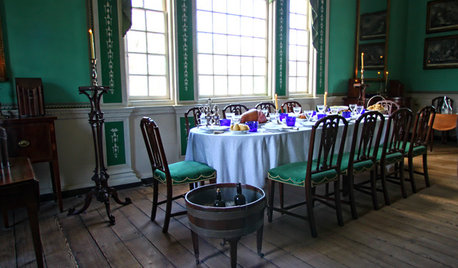What is safe for killing grass where a citrus tree sits?
JR78
12 years ago
Related Stories

GARDENING GUIDESHow to Keep Your Citrus Trees Well Fed and Healthy
Ripe for some citrus fertilizer know-how? This mini guide will help your lemon, orange and grapefruit trees flourish
Full Story
COLORColor of the Week: 10 Tangy Ways with Citrus Green
Add some zest to your home with a little — or a lot of — lively lime
Full Story
HOUSEPLANTS8 Houseplants You Can't Kill
They're forgiving and let you forget. Houseplants don't get any easier than this
Full Story
MOST POPULARThe Perfect Houseplant for People Who Kill Houseplants
If you can fill a jar with water, you can keep golden pothos vine happy — and it will pay you back with cleaner air and a greener home
Full Story
COLORWhen Color Could Kill: Stories From the History of Paint
Delve into paint's storied past — what you learn about its history and modern incarnations may surprise you
Full Story
LIFEHouzz Call: Where (and What) Are You Reading This Summer?
Whether you favor contemporary, classic or beach reads, do the long and lazy days of summer bring out the lit lover in you?
Full Story
LANDSCAPE DESIGNIs It Time to Consider Fake Grass?
With more realistic-looking options than ever, synthetic turf can be a boon. Find the benefits and an installation how-to here
Full Story
PETSThe Crate Conundrum: A Safe Place for Your Pooch
Get ideas for a comfy den for your dog that works well with your space too
Full Story
DECORATING GUIDES8 Tips for Creating a Safe and Cozy Nursery
Learn how to design a room that will grow up with your baby and also will be comfortable for you
Full Story
EXTERIORSWhere Front Yards Collide: Property Lines in Pictures
Some could be twins; others channel the Odd Couple. You may never look at property boundaries the same way again
Full Story






johnmerr
hoosierquilt USDA 10A Sunset 23 Vista CA
Related Professionals
Ballwin Landscape Architects & Landscape Designers · La Marque Landscape Architects & Landscape Designers · Leawood Landscape Architects & Landscape Designers · Middle River Landscape Architects & Landscape Designers · Clayton Landscape Contractors · Essex Landscape Contractors · Mendota Heights Landscape Contractors · Nashua Landscape Contractors · Peoria Landscape Contractors · South Hackensack Landscape Contractors · South Lyon Landscape Contractors · Tavares Landscape Contractors · Wailuku Landscape Contractors · West Haverstraw Landscape Contractors · Melvindale Stone, Pavers & Concretetantanman
JR78Original Author
hoosierquilt USDA 10A Sunset 23 Vista CA
JR78Original Author
hoosierquilt USDA 10A Sunset 23 Vista CA
pgde
JR78Original Author
hoosierquilt USDA 10A Sunset 23 Vista CA
JR78Original Author
merrybookwyrm
tantanman
blazeaglory
meyermike_1micha
andrewofthelemon
hoosierquilt USDA 10A Sunset 23 Vista CA
wunderpit
johnmerr
rhizo_1 (North AL) zone 7
johnmerr
rhizo_1 (North AL) zone 7
Georgieboy
manfromyard
johnmerr